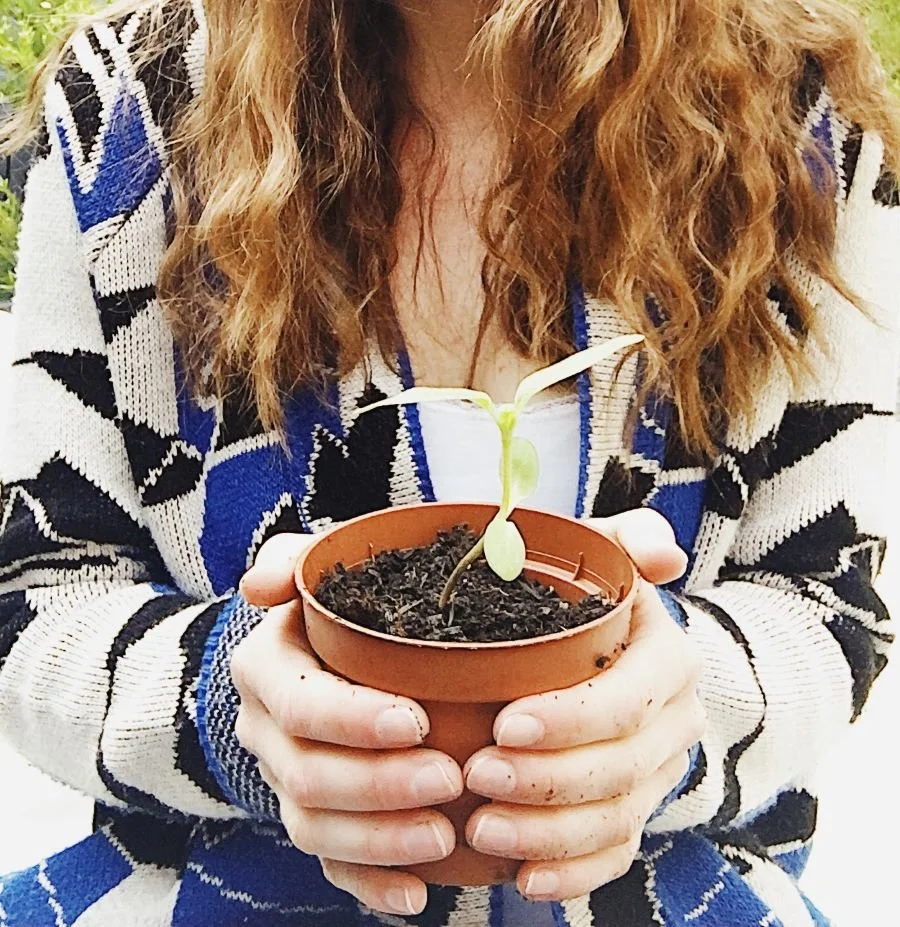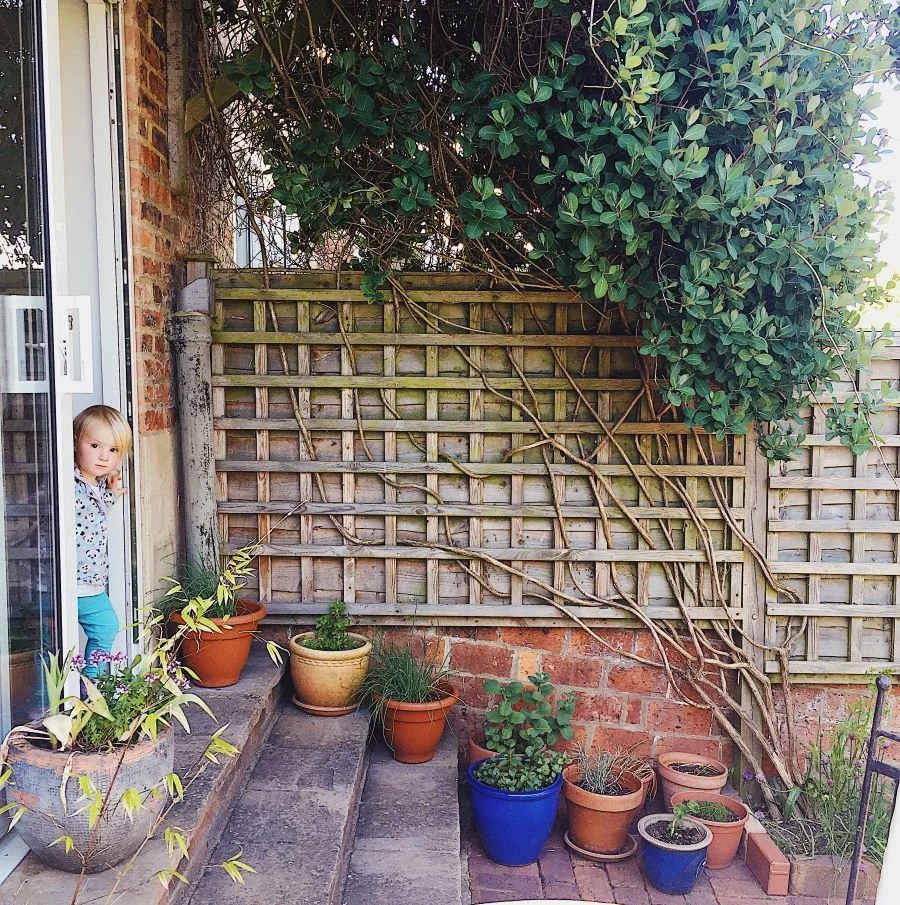How to Deal with Horsetail in an Organic, No Dig Way.
If you’ve has any experience with horse/mares tail you’ll know it’s a really nightmare to deal with. It leaves many people looking for all sorts of solutions to help them combat this pest of a weed quickly and easily. However, I really urge you to only deal with horse tail in an organic way. For me I find that any garden problem can be dealt with by adopting the “No Dig” method of gardening.
No dig gardening is really a change of mindset in the garden, in which your soil will be improved, weeds will lessen, you can increase the bio-diversity in your garden, and an added extra that it will help you combat horsetail/mares tail.
This guide will give you all you need to know to get on top of and eventually rid your garden, veg patch or allotment plot of horse/mares tail. These methods can be used on any perennial weeds that take over your garden and used in a way to increase the health of your soil.
But firstly let’s start with….
The difference between horsetail and mares tails.
Horsetail and mares tail are the same thing. Two names used interchangeably to refer to the same plant, Equisetum Arvense. Horsetail is the more widely known and more accepted term while Mares tail is more regional. In botanical classifications, there is no difference.
How to identify horsetail.
Horse tail/mares tail can be identified by:
1. It’s appearance: It resembles a small, primitive fen with a distinct hollow stem and no true leaves.
2. It’s stem: The stems on horsetail are segmented, usually green with a slight brown coloration giving them a bamboo-like appearance.
3. Reproductive Structures: Some of the horsetail stem produces cone-like structures called strobili at the tips of its stems. These cone-like structures contain spores and are responsible for the plant's reproductive cycle.
4. No Leaves: Unlike most plants, horsetail lacks true leaves. Instead, it has tiny, scale-like structures called microphylls that surround the stem joints.
5. Spreading Habit: Horsetail spreads through rhizomes, underground horizontal stems that give rise to new shoots. This can lead to the formation of dense patches or colonies of horsetail plants.
The importance of dealing with horsetail organically and in a no dig way.
It can be so tempting when dealing with dense patches of horsetail to reach for a bottle of weed killer or to rotative (known also as tilling the soil) the area to dig all of the horsetail out. Especially when an older relative, allotment neighbour or any other experienced gardener is telling you to do so. However, always remember that while these may appear to give instant results horsetail will continue to come back and you will need continued maintenance to keep on top of the problem. The difference with organic and no dig methods is that you’ll always have a healthy soil ecology and a healthy ecosystem within at the same time, which will help the plants thrive, improve our yields and most importantly in this case, help prevent the horsetail coming back so much in the future.
Why is horsetail so hard to get rid of?
Horsetail (Equisetum arvense) can be challenging to get rid for a number of reasons.
1. Deep and Extensive Rhizomes:
Horsetail spreads through an extensive underground network of rhizomes. These rhizomes can penetrate deep into the soil, making it difficult to remove the entire root system. Even if you remove the visible parts of the plant, the remaining rhizomes can regenerate and give rise to new shoots. This is why the method you’ll read below is the quickest and easiest method for dealing with horsetail.
2. Resilient Spores:
Horsetail produces spores in its cone-like structures, called strobili. These spores are dispersed by wind and can travel long distances, making it easy for horsetail to reestablish itself in new areas. Even if you remove the existing plants, new horsetail can emerge from spores that have settled in the soil.
3. Lack of Effective Herbicides:
I would never recommend using herbicides, pesticides or any other kind of “cides“ but to prove that it is pointless using them I looked into what could be used to treat horsetail. I found that traditional herbicides often have limited effectiveness against horsetail. The tough outer layer of the plant's stems, combined with its ability to quickly regenerate from rhizomes, makes it challenging for herbicides to penetrate and kill the entire plant.
In turn spraying an area with herbicides would kill all other plants and weeds in the area leaving nothing to compete with the horsetail and therefore allow the horsetail to thrive even more.
4. Persistence and Longevity:
Horsetail is a persistent plant that has been around for millions of years. It has adapted survival strategies that allow it to withstand adverse conditions. Its ability to regenerate from small fragments and its deep-rooted rhizomes contribute to its longevity and resilience.
5. Ecological Adaptability:
Horsetail is adaptable to various soil types and can tolerate both wet and dry conditions. It can thrive in disturbed areas, poor soils, and areas with high acidity, making it difficult to eliminate through traditional gardening practices.
So now you know why it is to difficult to get rid of let me tell you the methods you’ll be to take to battle with this pest…..
Ways to get rid of horsetail organically and in a no dig way.
There are 7 main ways to control horsetail, however, I recommend using a combination of all 7 methods together in one way or another for the best results.
The aim with each method is to weaken the roots. That means the horsetail will try to grow back each time. Don’t be down heartened by this, it is working, you just need to do these methods over a period of time and maintain it. They are easy and cheap to keep at it. So keep growing and trust that it’s working. I’m rooting for you.
1. Covering soil:
Covering the soil and blocking out the light is the most effective way of weakening the Horsetail plant. Though it will still try and grow through, finding its way to any light the longer you leave the area covered the weaker the plant with become. This is the best solution if you have a large area like an allotment with a big horsetail infestation. Just like the one I have been dealing with over the last 3 growing seasons.
You can do this is two ways:
Covering with plastic
Cover the area in black plastic or a weed membrane. Weed membranes can be best as it will still let water through but could be costly to buy for a large area. Though bear in mind it lasts well so can be re-used or passed on for many years to come. Or find some thick black plastic that is no longer needed and can be re-used. I managed to get some from our builder that he was going to throw away. Look on free-cycle or marketplace to see if anyone is getting rid of any.
Covering with cardboard and mulch
Secondly, you can use the no-dig method of creating garden beds by covering will thick layers of cardboard, topped with woodchip, compost or manure. The thicker the cardboard (a double layer if you can) the better. Sourcing lots of cardboard is easier than you think. Ask local shops, manufacturers, or cafes. They will have a ton they are always getting rid of. Wood chip is also easy to come by, local tree surgeons will drop off a pile for free. If you are at an allotment there’s usually a pile for everyone to dig into. As for large amounts of compost or manure, this can be brought cheaply from local farmers who will deliver a truckload. This is what you’ll need for a large area. If it’s a smaller area making or buying your compost is the best option.
Use compost or manure to cover areas you want to grow in and woodchip for paths and areas around trees and fruit bushes.
You can plant straight into the compost or manure. Make sure you strim or mow the area first before covering.
For my own allotment I used both of the above methods. Creating the no-dig beds with cardboard and mulch for the area I wanted to cultivate and start growing on and the black plastic method for the rest. This meant I dealt with one area at a time. It’s important to be realistic about what you’ll be able to manage. Otherwise, it can become overwhelming, unsustainable and put you off gardening all together.
The first no dig beds we created on our allotment to control weeds including horsetail.
2. Mulching:
Adding a mulch to your soil on a yearly basis is important for the soil health, with the added benefit of suppressing weeds. It’s the same theory as above. Simply spreading a mulch such as compost, manure, or wood chip to block out the light and weaken any weed including horsetail. This is a good method to prevent horsetail coming back or if you have a small problem with horsetail. Otherwise I would focus on the first method, mulching extremely thickly.
This method is the back bone for no-dig gardening and is the best organic way to control weeds making gardening and weeding a much easier task.
3. Hand weeding and pulling:
Even once you have covered horsetail it will still try to come back. The good news is it won’t be as dense or overwhelming as it originally was and you can hand weed and pull out what does make it through your barrier.
The second piece of good news is once you have been mulching and covering the soil it will be much healthier and looser so the hand weeding is SOOO much easier. Easier again if the soil is moist after a nice amount of rainfall. Though pull it out as soon as it appears or as soon as you have the time rather than wait for rainfall.
How to pull and handweed horsetail:
The best way to hand weed horsetail is to hold it at base of the stem and pull so it stretches before it breaks. This weakens the root, the more you do this, especially if you do it as soon as a new shoot appears the weaker the mother root will become and slowly but surely your horsetail problem will reduce. You can use a hand trowel to help pull more of the root up as you do this if you want.
There is a lot of recommendation in the gardening world to dig out the whole root and to be careful if it breaks as a new shoot will appear at the break. However, it is near impossible to fully dig out the whole root, and is a lot of work meaning the horsetail will still try and grow back whether you pull the top or dig the whole root out. This is why weakening the plant over time by pulling and stretching it as you do so, then blocking out as much light as possible is the best longer-term method. It is also much easier and quicker which is important especially if you have a large, dense area of horsetail like I do. I can cover more ground quickly and get on top of the problem more efficiently.
4. Regular maintenance:
As mentioned above there is no overnight fix. Covering soil and hand weeding when new shoot comes up is the best long-term solution. We have been doing this method on my own allotment for 3 years. Each year the problem is visibly better. My mum's allotment, which she has had for 20 years, has no horsetail. Though her infestation when she took on her allotment was not quite as bad as mine, using this method meant she has not had to deal with horsetail for most of that 20 years. The odd one that does appear gets removed and is rarely seen again.
5. Cutting and mowing:
Mowing over the area of horsetail is another way to weaken the plant. Keeping an area mown regularly will weaken the plant each time and allow other plants such as the grass or the clover in your lawn to thrive as they do not mind being mown. Slowly the horsetail will reduce and the grass will fill in.
This is another good method if you are taking on a larger area like an allotment infested with horsetail that you want to cultivate. Start by covering/mulching and cultivating a small area that you are able to keep on top of hand weeding and pulling, then mow the rest. This will stop the overwhelm of having too much to deal with. Once you have got on top of the first area you have cultivated you can move on to the area you have just been mowing. By this point, the horsetail problem will be vastly reduced and easier to deal with.
You could also use the covering and mulching method for creating beds and mow the pathways in between.
Covering areas in black plastic and mowing other areas in order to reduce the spread of Horsetail.
6. Companion planting and outcompeting:
This is the same theory as above, in which we encourage the grass to out-compete the horsetail. It also applies to making sure you plant as many crops as you can. By year two on my allotment, the herb patch I planted has filled out nicely and this is where I get the least amount of horsetail popping up.
The soil is mulched to suppress weeds and then the large herb plants block out more light, their roots fill the soil, and the horsetail is weakened again. When I see any horsetail trying to poke through, I pull it straight out.
7. Lasagna gardening and raised bed methods:
Lasagna gardening is a no-dig method of building a raised bed. I don’t normally recommend using raised beds on a large area like an allotment because I think it’s unnecessary and is time-consuming to build. I also agree with Charles Downing the father of no-dig gardening when he says wooden raised beds create habitats for pests like slugs and wood lice that you do not want near your vegetable plants. However, I do have some metal-raised beds at home see my article on “Are Raised-Beds Worth it”. This type of high-raised bed if you wanted them would create height to fully block out light and completely suppress the growth of horsetail in your growing bed. You would then need to mow or cardboard and wood chip the paths around the bed to keep on top of the horsetail in those areas. Mowing in this situation, sowing grass seed if necessary to help compete with the horse, would be the easiest option.
LONG-TERM management of horsetail to prevent future problems
It is important to keep the good practices of hand weeding, pulling and mulching going in the long term. This way you’re horsetail will never get strong enough again to take over anything in your garden or veg plot. Mulching, practicing organic gardening and keeping roots in the soil will not only prevent weeds from taking over but will mean you have a very healthy garden that thrives for both you and the planet.
More articles you might find useful…
Cheap and Sustainable Garden Landscaping. Your how to.
How to Source Budget Organic Plants. Garden for Free.

























Growing garlic organically on a no dig allotment. The best and easiest way to grow garlic.